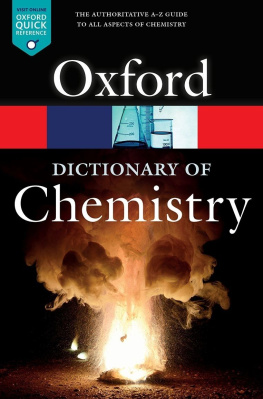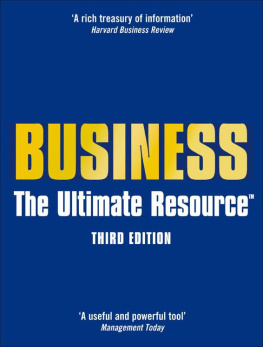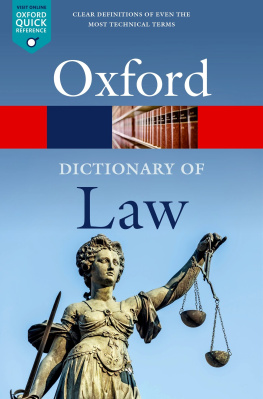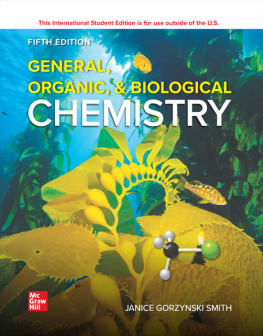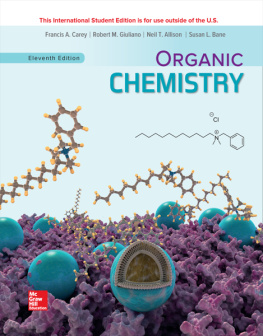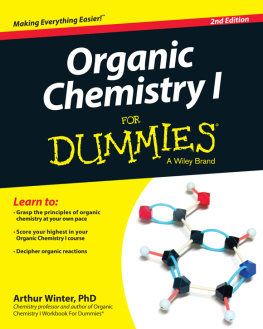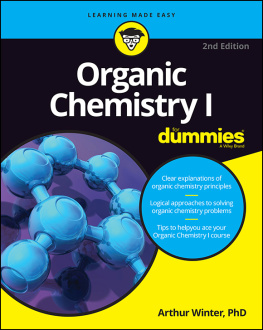While most e-readers can display special characters (such as and ), many cannot search for words containing them, unless the special characters themselves are typed into the search box. If you are unable to type these characters, please browse for your term using the .
OXFORD QUICK REFERENCE
A Dictionary of
Chemistry

For recommended web links for this title, visit www.oxfordreference.com/page/chem when you see this sign.

Great Clarendon Street, Oxford, OX2 6DP, United Kingdom
Oxford University Press is a department of the University of Oxford. It furthers the Universitys objective of excellence in research, scholarship, and education by publishing worldwide. Oxford is a registered trade mark of Oxford University Press in the UK and in certain other countries
Market House Books Ltd. 1985, 1990, 1996, 2000, 2004, 2008, 2016, 2020
The moral rights of the author have been asserted
First published in 1985 as A Concise Dictionary of Chemistry
Second edition 1990
Third edition 1996
Fourth edition 2000
Fifth edition 2004
Sixth edition 2008
Seventh edition 2016
Eighth edition 2020
Impression: 1
All rights reserved. No part of this publication may be reproduced, stored in a retrieval system, or transmitted, in any form or by any means, without the prior permission in writing of Oxford University Press, or as expressly permitted by law, by licence or under terms agreed with the appropriate reprographics rights organization. Enquiries concerning reproduction outside the scope of the above should be sent to the Rights Department, Oxford University Press, at the address above
You must not circulate this work in any other form and you must impose this same condition on any acquirer
Published in the United States of America by Oxford University Press
198 Madison Avenue, New York, NY 10016, United States of America
British Library Cataloguing in Publication Data
Data available
Library of Congress Control Number: 2019957829
ISBN 9780198841227
ebook ISBN 9780192578167
Printed in Great Britain by Clays Ltd, St Ives plc
Links to third party websites are provided by Oxford in good faith and for information only. Oxford disclaims any responsibility for the materials contained in any third party website referenced in this work.
Contents
This dictionary was originally derived from the Concise Science Dictionary, first published by Oxford University Press in 1984 (seventh edition, retitled A Dictionary of Science, 2017). It consisted of all the entries relating to chemistry in that dictionary, including those on physical chemistry, as well as many of the terms used in biochemistry. Subsequent editions included special feature articles on important topics as well as several chronologies tracing the history of some topics and short biographical entries on the chemists and other scientists who have been responsible for the development of the subject. For this eighth edition the text has been fully revised and updated, with some entries being substantially expanded. In addition, almost 200 new entries have been added covering all branches of the subject. The coverage of certain fieldsin particular organic chemistry, biochemistry, and environmental chemistryhas been expanded to take account of the most recent developments.
The more physical aspects of physical chemistry and the physics itself will be found in A Dictionary of Physics, which is a companion work to this dictionary. A Dictionary of Biology contains a more thorough coverage of the biophysical and biochemical entries from A Dictionary of Science together with the entries relating to biology.
SI units are used throughout this work and its companion dictionaries.
Using the dictionary
An asterisk placed before a word used in an entry indicates that this word can be looked up in the dictionary to provide further explanation or clarification. Some entries simply refer the reader to another entry, indicating either that they are synonyms or abbreviations or that they are most conveniently explained in one of the dictionarys longer articles or features. Synonyms and abbreviations are usually placed within brackets immediately after the headword. Terms that are explained within an entry are highlighted by being printed in boldface type .
R.R.
2019
List of Entries by Subject
Analytical Chemistry
Atoms and Nuclei
Biochemistry/Molecular Biology
Biographical
Chemical Reactions
Computational, Quantum and Theoretical Chemistry
Electrochemistry
Environmental Chemistry
Industrial Chemistry
Inorganic Chemistry
Medical Chemistry
Organic Chemistry
Physical Chemistry
Polymers
Solids
Editor for the 7th and 8th editions
Richard Rennie PhD, MSc, BSc
Editor for previous editions
John Daintith BSc, PhD
Market House Books editor
Jonathan Law
Advisers
B. S. Beckett BSc, BPhil, MA (Ed)
R. A. Hands BSc
Michael Lewis MA
Contributors
John Clark BSc
H. M. Clarke MA, MSc
R. Cutler BSc
Derek Cooper PhD, FRIC
D. E. Edwards BSc, MSc
David Eric Ward BSc, MSc, PhD
.
.
.
. Ab-initio calculations can, for example, be used to determine the bond lengths and bond angles of molecules by calculating the total energy of the molecule for a variety of molecular geometries and finding which conformation has the lowest energy.
; its unit, the kelvin, was formerly called the degree absolute (A) and is the same size as the degree Celsius. In British engineering practice an absolute scale with Fahrenheit-size degrees has been used: this is the Rankine scale.
.
). Two conventions are in use: The d l convention relates the structure of the molecule to some reference molecule. In the case of sugars and similar compounds, the dextrorotatory form of glyceraldehyde (HOCH2CH(OH)CHO), 2,3-dihydroxypropanal) was used. The rule is as follows. Write the structure of this molecule down with the asymmetric carbon in the centre, the CHO group at the top, the OH on the right, the CH2OH at the bottom, and the H on the left. Now imagine that the central carbon atom is at the centre of a tetrahedron with the four groups at the corners and that the H and OH come out of the paper and the CHO and CH2OH groups go into the paper. The resulting three-dimensional structure was taken to be that of

